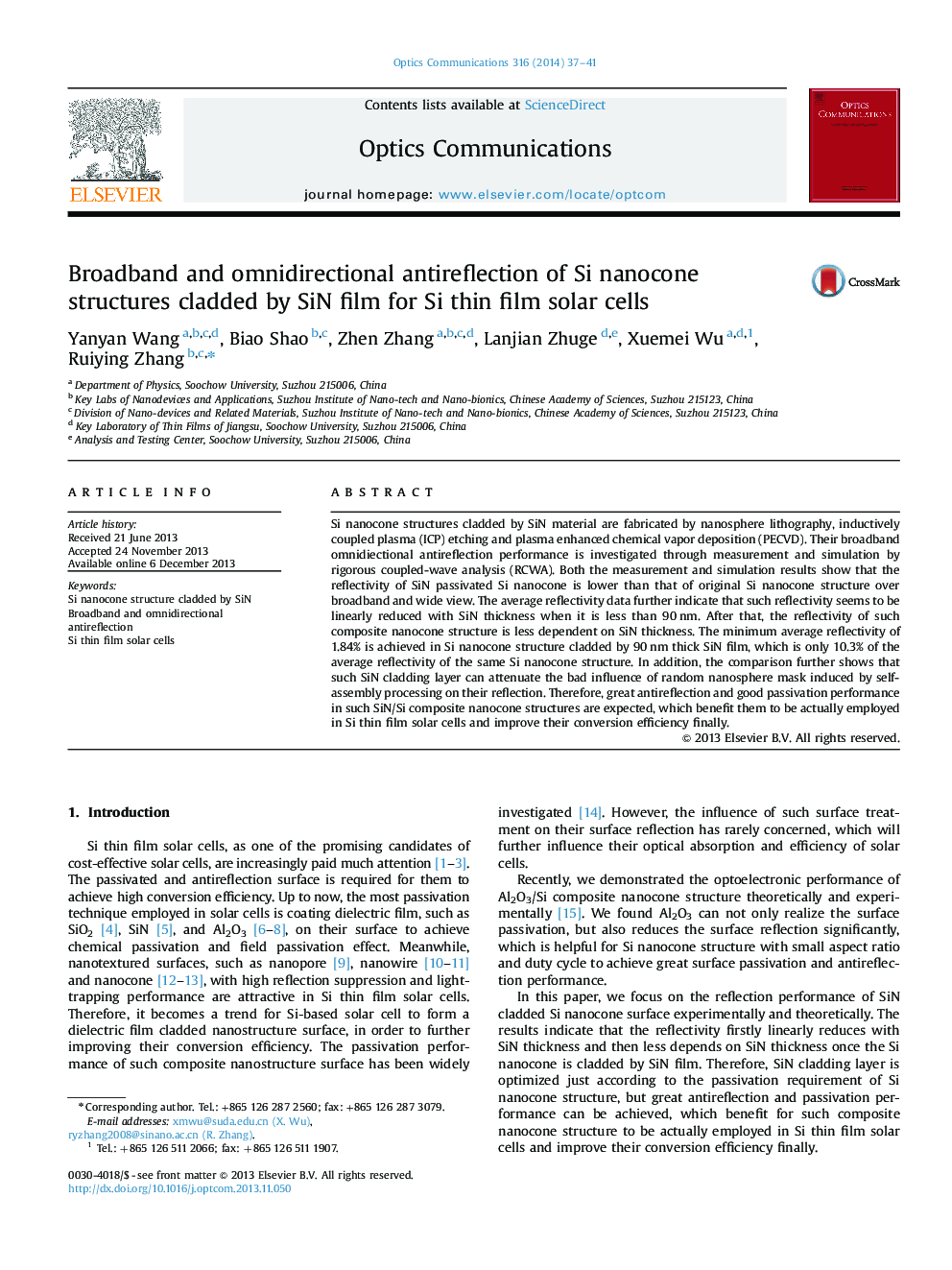| Article ID | Journal | Published Year | Pages | File Type |
|---|---|---|---|---|
| 7931616 | Optics Communications | 2014 | 5 Pages |
Abstract
Si nanocone structures cladded by SiN material are fabricated by nanosphere lithography, inductively coupled plasma (ICP) etching and plasma enhanced chemical vapor deposition (PECVD). Their broadband omnidiectional antireflection performance is investigated through measurement and simulation by rigorous coupled-wave analysis (RCWA). Both the measurement and simulation results show that the reflectivity of SiN passivated Si nanocone is lower than that of original Si nanocone structure over broadband and wide view. The average reflectivity data further indicate that such reflectivity seems to be linearly reduced with SiN thickness when it is less than 90Â nm. After that, the reflectivity of such composite nanocone structure is less dependent on SiN thickness. The minimum average reflectivity of 1.84% is achieved in Si nanocone structure cladded by 90Â nm thick SiN film, which is only 10.3% of the average reflectivity of the same Si nanocone structure. In addition, the comparison further shows that such SiN cladding layer can attenuate the bad influence of random nanosphere mask induced by self-assembly processing on their reflection. Therefore, great antireflection and good passivation performance in such SiN/Si composite nanocone structures are expected, which benefit them to be actually employed in Si thin film solar cells and improve their conversion efficiency finally.
Related Topics
Physical Sciences and Engineering
Materials Science
Electronic, Optical and Magnetic Materials
Authors
Yanyan Wang, Biao Shao, Zhen Zhang, Lanjian Zhuge, Xuemei Wu, Ruiying Zhang,
